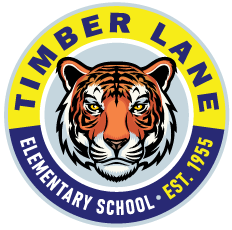February 2023 1st Grade Newsletter
Important Dates & Reminders
- February 8th: Family Market
- February 8th: Report Cards Go Home
- February 13: 100th Day of School
- February 20: No School - Presidents Day
Make sure your child comes to school with one easy and healthy snack and water bottle every day.
Check out our updated attendance form! Along with reporting an all day absence, you can now report a late arrival or an early dismissal, https://timberlanees.fcps.edu/about/attendance-form.
Language Arts
What We Learned This Past Month:
- Students will use different words, punctuation and word placement in order to change the way a poem sounds or feels
- Students will understand that changing the punctuation, word choice, and word placement in a poem will affect the meaning
- We will learn all about poetry and the decisions poets make to express feelings in their poems
- We will learn more about change and how to express the ways we have changed through poetry
What We Will Be Learning Next Month:
- Students will learn about open and closed syllables
- When a syllable ends with a consonant, the vowel sound is usually short
- When a syllable ends with a vowel, the vowel sound is usually long
- Every syllable has one vowel sound
- Students will learn about long vowel patterns in words
- When a syllable or word ends with vowel, consonant, e, the first vowel is long and the e is silent
- We can spell the long vowel sound with an e that follows one consonant
- We will learn how to talk about books with our classmates
- We will discuss how characters in our story change over time
Math
What We Learned This Past Month
- Students will continue to practice how to count forward orally by ones to 110, starting at any number between 0 and 110
- Write the numerals 0 to 110 in sequence and out-of-sequence
- Count backward orally by ones when given any number between 1 and 30
- Count forward orally by ones, twos, fives, and tens to determine the total number of objects to 110
- Group a collection of up to 110 objects into tens and ones and write the corresponding numeral to develop an understanding of place value
What We Will Be Learning Next Month:
- Students will continue practicing addition and subtraction within 20 in the third unit of addition and subtraction
- Students will learn how to create and say a fair share within a group or object
- Students will be be able to represent halves and fourths using models
Science
What We Learned Last Month:
- Students will learn that living things have basic needs (energy and matter) and functional parts that allow them to survive
- Students will learn that living things respond to factors in their environment, including weather and change of seasons
- We will learn about the relationship between the sun and Earth that can be observed through patterns in nature. The sun is the primary source of energy providing light and warmth for Earth
- We will learn that human actions can affect the world around us. Natural resources can be used responsibly through conservation
What We Will Be Learning Next Month:
- We will learn about plants’ and animals’ responses to the change in seasons
- Students will learn about animal homes and body coverings
- We will learn about plant parts and the basic needs of plants
Social Studies
What We Learned This Past Month:
- We will learn about Virginia past and present, and what ways Virginia has changed over time
- How does climate and environment impact the way people live
- We will learn how people depend on other people and their environment for survival
What We Will Be Learning Next Month:
- We will describe and make connections to the impacts of influential Virginians who helped form a new nation
- Students will make connections to people and events associated with
- George Washington Day (Presidents' Day)
- Juneteenth
- Independence Day
- We will learn about the relationship between money and savings
- Students will understand that geographical features, such as landforms and location, affect how people live

